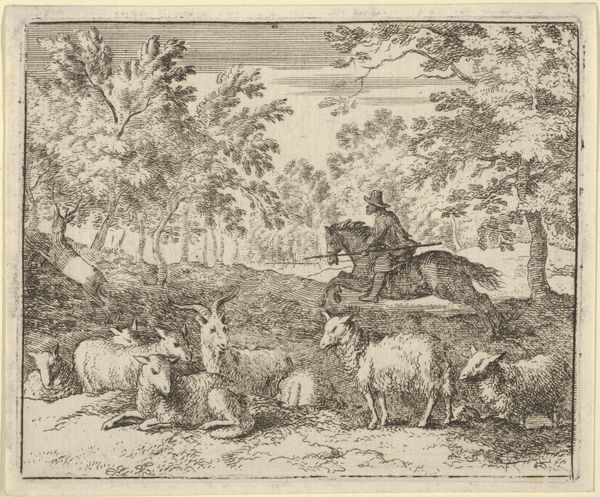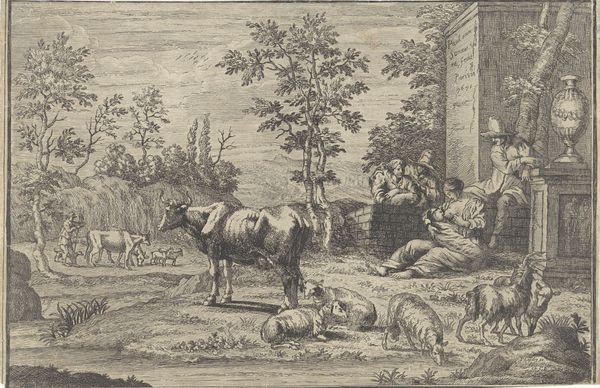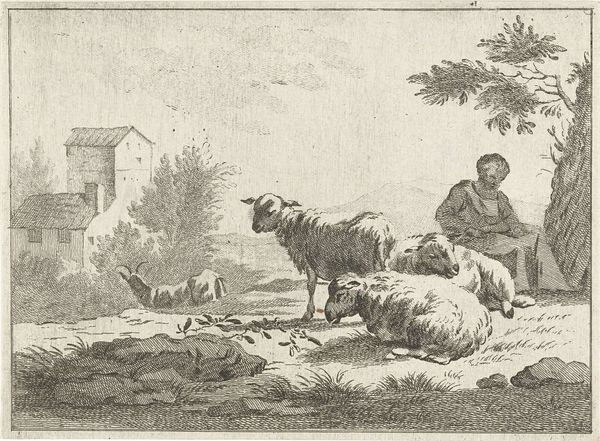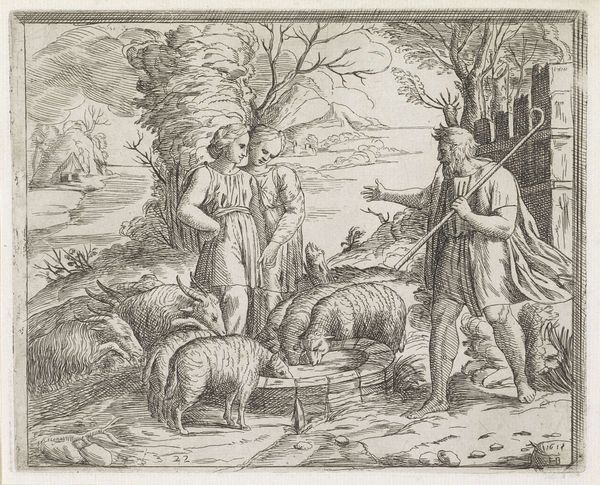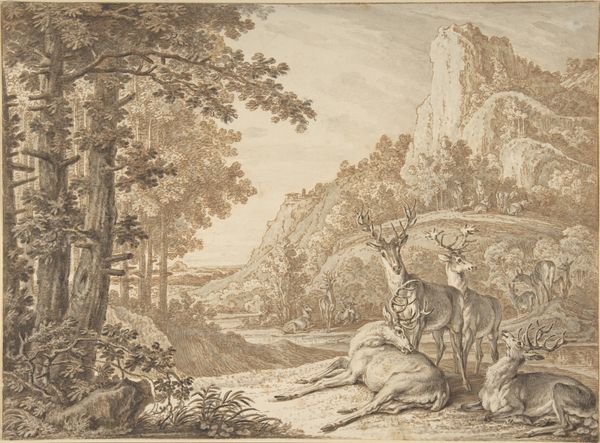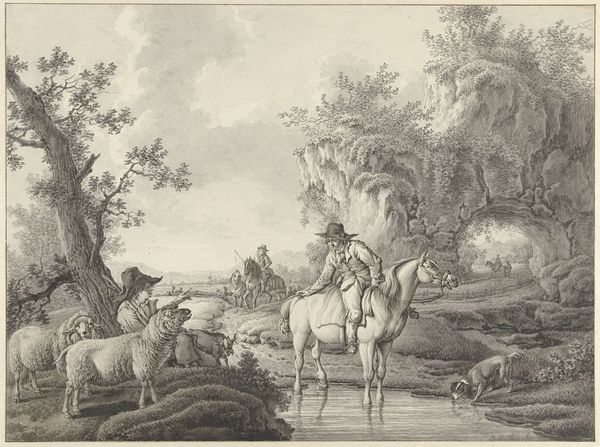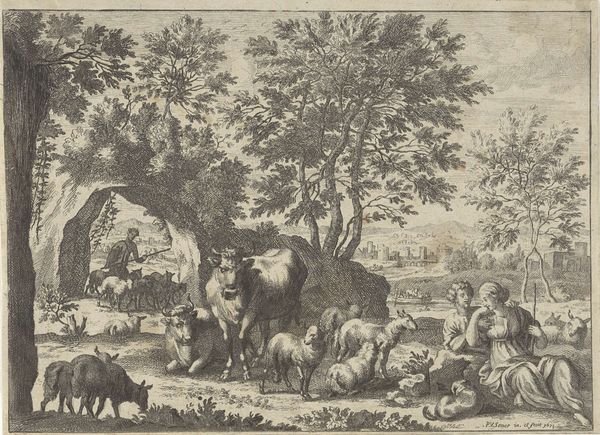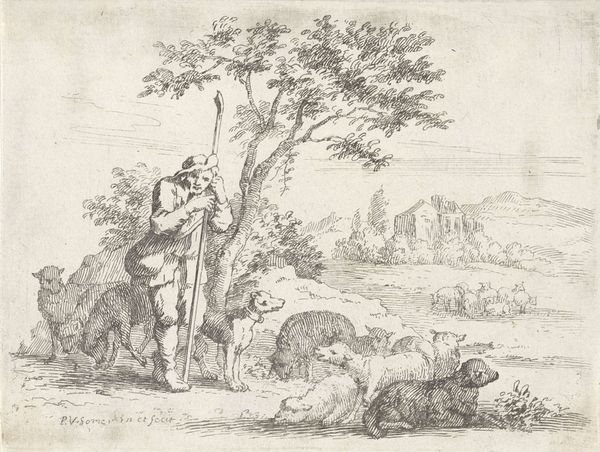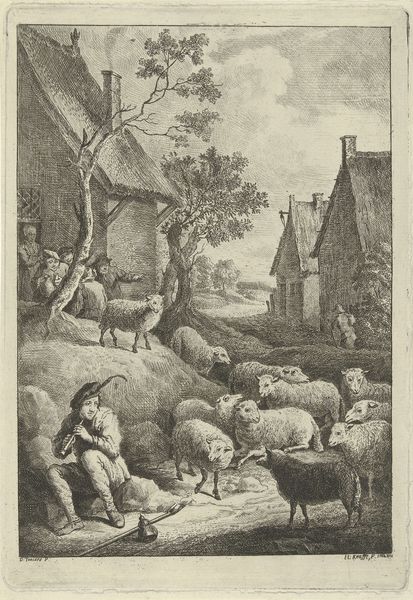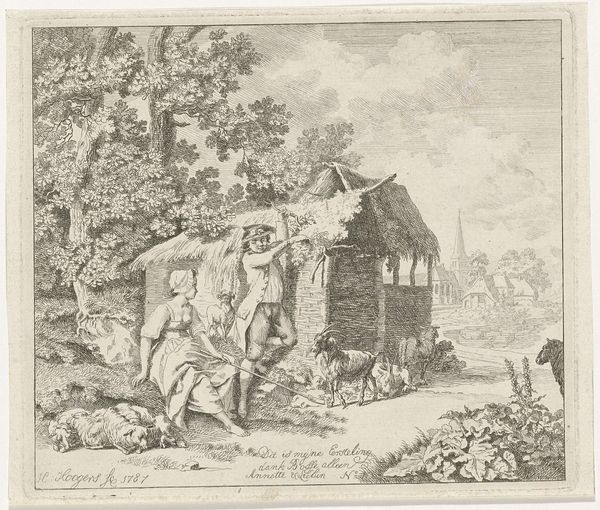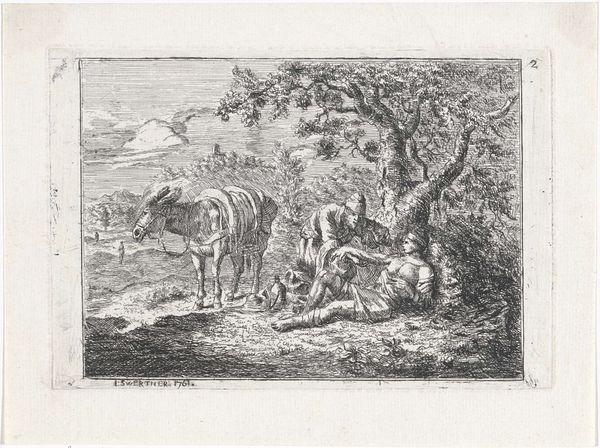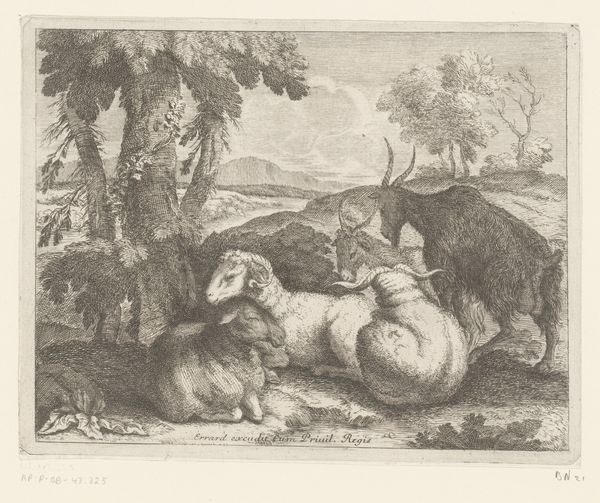
drawing, paper, ink, pencil, pen
#
drawing
#
narrative-art
#
baroque
#
pencil sketch
#
landscape
#
figuration
#
paper
#
ink
#
pencil
#
pen
#
genre-painting
#
academic-art
#
watercolor
Dimensions: 432 mm (height) x 271 mm (width) (bladmaal)
Pietro Paolo Raggi rendered 'The Prodigal Son' on paper, likely using a combination of pen, ink, and wash techniques. The earthy sepia tones suggest the use of iron gall ink, a common choice during the 17th and 18th centuries. The application of ink and wash reveals much about Raggi's process. Notice the fine, controlled lines which define the figures and architecture. The washes create depth and shadow, giving the scene a sense of volume. This technique, though traditional, required immense skill and control. Raggi masterfully depicts the mundane labor of caring for livestock –a stark contrast to the fine art often celebrated during this period. There is labor in the making, and labor in the image itself. Consider the social context: The image of the Prodigal Son caring for pigs challenges the conventions of high art. This piece reminds us that art can find meaning in the everyday, inviting us to look beyond traditional hierarchies.
Comments
No comments
Be the first to comment and join the conversation on the ultimate creative platform.
